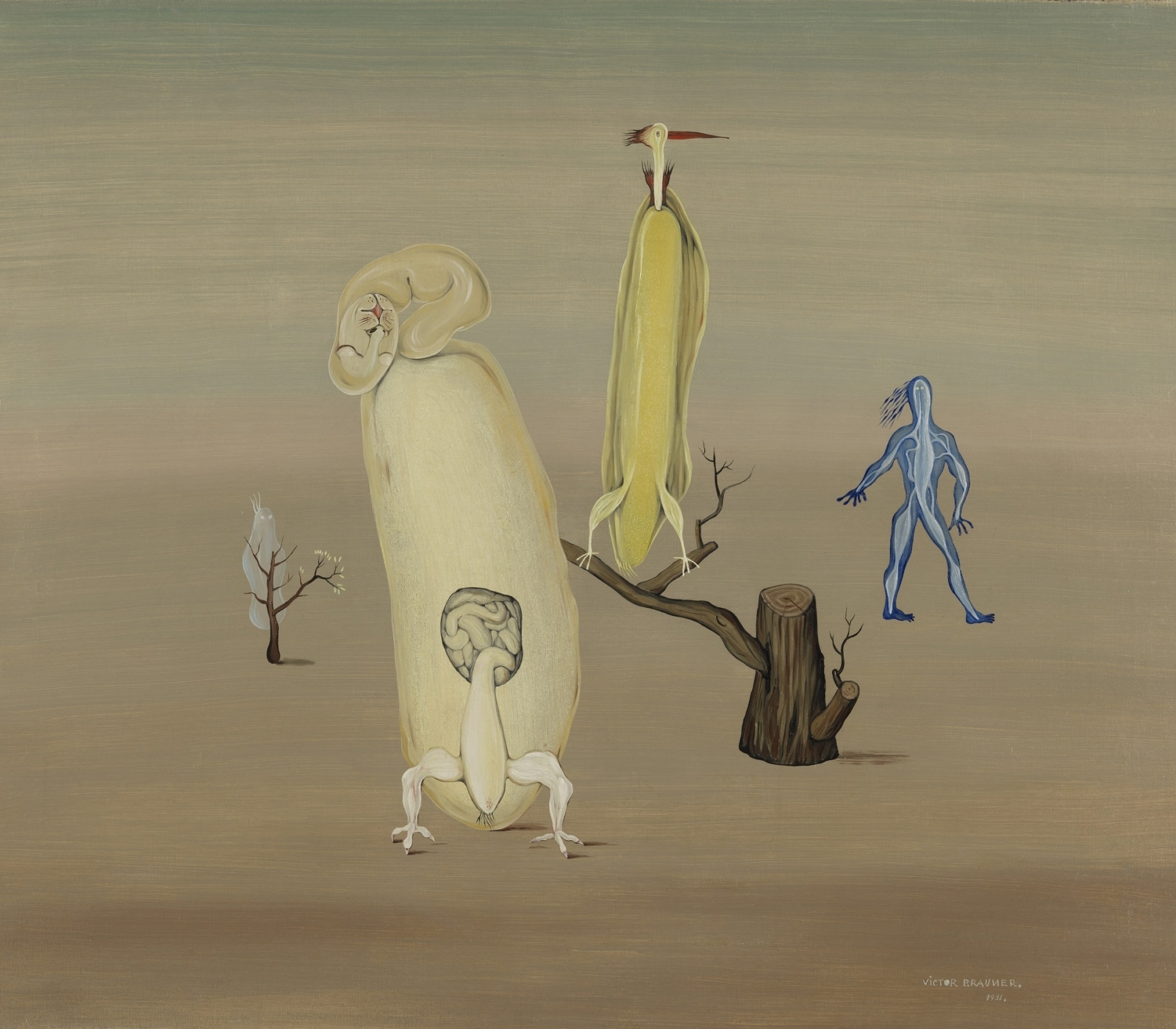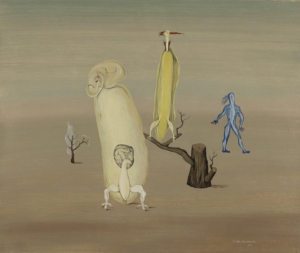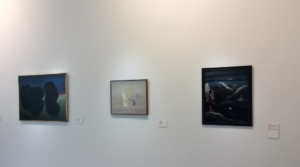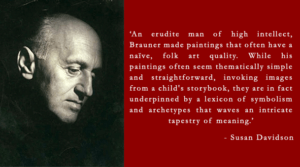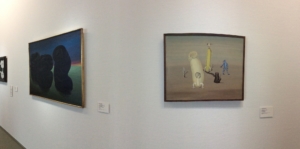Dickinson is pleased to have facilitated the acquisition by the Museum Boijmans Van Beuningen of Le Déserteur by the Romanian-Jewish avant-garde artist Victor Brauner.
”Painting is life, the real life, my life.”
– Victor Brauner
Although he began by painting Cézanne-esque landscapes, Brauner was introduced to the Surrealist circles by Yves Tanguy and Alberto Giacometti after resettling in Paris in 1930. Much of his imagery derives from mythology and dark, fantastical worlds and creatures. In 1934 he staged his first solo exhibition in Paris, and in 1949 he broke with the Surrealist movement to explore autobiographical spiritual themes. Le Déserteur was featured at Dickinson’s exhibition The Surrealist Revolution at Frieze Masters in October 2016.
Le Déserteur was painted at the height of Brauner’s involvement with Surrealism, in the same year that he joined André Breton’s circle in Paris. Whilst under the influence of friends and neighbours such as Giacometti, Tanguy and Constantin Brâncusi, Brauner began to paint eerie, unsettling pieces such as Le Déserteur, which reflect his obsession with Romanian folklore, black magic and the occult. The de-contextualised, dream-like figures resemble the semi-human, often diabolical or grotesque characters populating paintings by the 15th-century Netherlandish artist Hieronymus Bosch, whose work inspired a number of the Surrealists.
The Museum Boijmans Van Beuningen, located in Rotterdam, is one of the oldest museums in the Netherlands, and boasts a collection ranging from the early Middle Ages to the 21st century. The Surrealist movement is a particular strength, represented by examples from artists including Salvador Dalí and René Magritte, but this is the first painting by Brauner to enter the collection. It will fill an important gap in the five-century progression from Bosch, also represented by several rare paintings, to Surrealism. An exhibition celebrating the movement, entitled Mad About Surrealism, opened in February 2017, and Director Sjarel Ex has acknowledged that this focus sets the Boijmans apart from other Dutch collections: ‘The Stedelijk, the Gemeentemuseum and others, they all went for modernism,’ he explains. ‘Luckily, this museum went for Surrealism.’
Le Déserteur is now on view at Museum Boijmans Van Beuningen.


